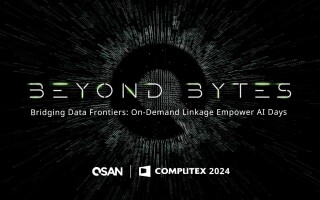Embedded Editor Report: NVIDIA GTC Begins with AI Splash
March 19, 2024
Story

The SAP Arena was absolutely madcap and packed in the leadup to the opening keynote from Jensen Huang, founder and CEO of NVIDIA, at NVIDIA GTC 2024.
Press from all over the world gathered to explore NVIDIA’s key themes of futurism in healthcare, automotive, graphics, and Generative and other AI, and to see how the company’s partners are leveraging technology in their industries.
The throng of technologists, engineers, developers and designers here in Santa Clara are getting an inside look at what the center of AI innovation will be over the next few years.
I expect to see lots of attention paid to AI art, 3d graphics, and other visual media, but I’m most interested in how AI is being used, and going to be used, in robotics, automated manufacturing and industrial, and automotive.
 The keynote session opened with a live, real-time AI art experience, or data sculpture as it was called, by artist Refik Anadol that was an exploration of light, sound and virtual 3d fluid dynamics that offered us in the audience a bit of synecdoche for the 10 minutes he performed. He seemed to be inputting prompts into an AI algorithm from a tablet on stage, and that AI was creating the flowing images we saw.
The keynote session opened with a live, real-time AI art experience, or data sculpture as it was called, by artist Refik Anadol that was an exploration of light, sound and virtual 3d fluid dynamics that offered us in the audience a bit of synecdoche for the 10 minutes he performed. He seemed to be inputting prompts into an AI algorithm from a tablet on stage, and that AI was creating the flowing images we saw.
As the keynote proper began, a starfield formed then morphed into a series of images and illustrations while an AI-esque voice declared: “I am a visionary. I am a helper. I am a transformer. I am a trainer. I am a healer. I am a navigator. I am AI.”
Huang took the stage and began talking through the past of NVIDIA from its first GPUs all the way up to trillions of flops in processing power it builds now. The real meat was doled out slowly over the full two hours of the session, but it boiled down to 5 key announcements.
First, Generative AI is, to Huang and NVIDIA, the new all-encompassing industry that will impact all other industries. Like IoT, personal computing, and indoor plumbing before it, Generative AI, he said, is set to revolutionize everything from manufacturing to psychiatry. And with that in mind, NVIDIA will be building its strategy toward enabling that technology.
Next and biggest, if only physically, was the announcement of NVIDIA’s new processing platform, built specifically for Generative AI and its massive need for processing and superseding previous GPUs by orders of magnitude. The Blackwell Platform has an inference capability at about 30 times what Hopper can do, Huang said, and the incorporated NVLINK Switch is capable of communications at almost 10x faster than anything before it, so it allows better parallelism in processing for GenAI.
 “In the future,” Huang said. “Data canters will be thought of as an AI factory, with the goal of generating intelligence and revenue.”
“In the future,” Huang said. “Data canters will be thought of as an AI factory, with the goal of generating intelligence and revenue.”
The next announcement added yet another layer to the NVIDIA stack as the company continues playing in every part of the processing field. The new NVIDIA NIMs are built on top of the NVIDIA CUDA platform and are among a catalog of cloud-native microservices that are designed for optimized inference on more than twenty AI models from NVIDIA and its partners.
Keeping the trend going, Huang dropped another layer into NVIDIA’s new strategic stack. NeMo and NVIDIA AI Foundry are integrated applications and services that will make it possible for any company to build and deploy its own GenAI for use internally or as a product offering. It includes training and use assistance and drives NVIDIA into the enviable position of being able to give so many companies what they want, and might even need: their own AI workforce.
On that same track, NVIDIA’s final announcement from Huang’s keynote is that the company’s virtual reality Omniverse will become a Digital Twin for everything. And that means it’s time to talk robots. Huang said, “Everything that moves will be robotic,” in the future, and he means to be there, too. NVIDIA ISAAC is a virtual toolset and application that is designed to give developers a powerful, end-to-end platform for the development, simulation, and deployment of AI-enabled robots.
As you can see, Huang’s vision of the future is one in which GenAI and automation are critical to every industry and every device, and he means for NVIDIA to be there too, holding the door open and helping everyone along.
The keynote ended with Huang and two adorable robots walking off stage together and a video of a spaceship flying through the entire scope of the Nvidia vision for computing and the stack of processing that will be required to make that happen.
And it doesn’t look very much like science fiction at all.





